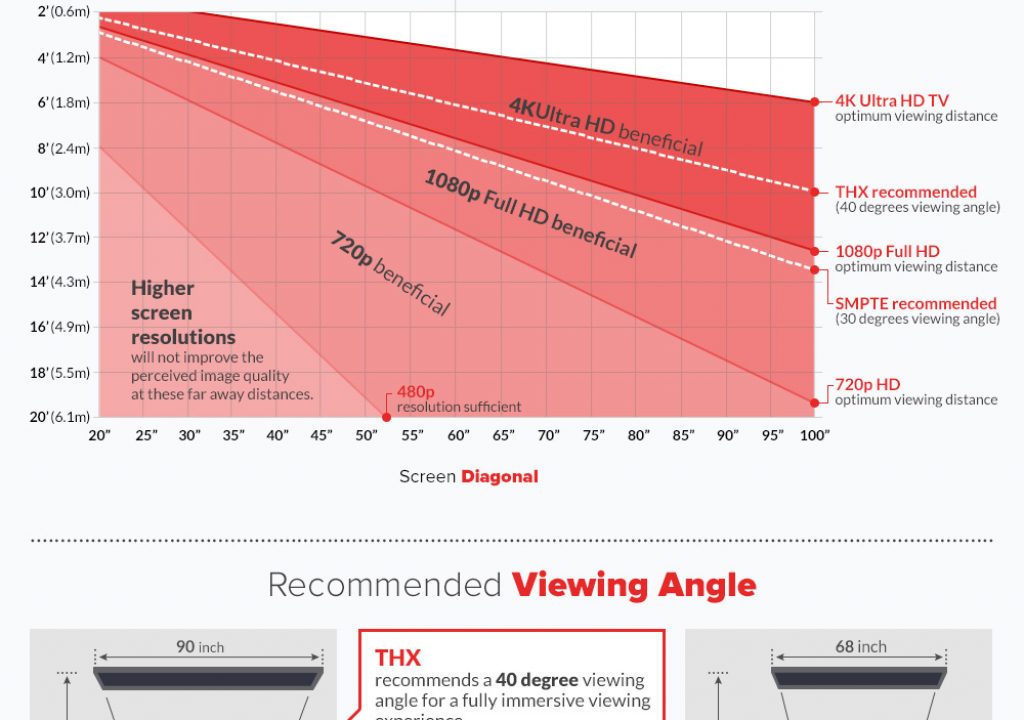The debate over the necessity and utility of 4K is mostly an academic one these days. Many professionals have embraced the technology while others find it completely unnecessary, but 4K TVs are are now readily available, and content providers like Netflix and Amazon Prime have started to provide more 4K video. The push to embrace these higher resolutions is coming from every corner of the industry, and that push shows no signs of slowing down anytime soon.
The question of whether or not people can and do see the difference that these resolutions represent is the real crux of the issue. The average viewing distance is approximately 9 feet. To achieve a fully immersive viewing distance, THX recommends a viewing angle of 40 degrees, which means the TV screen would have to be a whopping 90 inches. Very few consumers are ready to pay for and watch a screen that big in their homes today, but that mindset continues to evolve. At sizes above 65 inch, 4K resolution makes a notable difference even at normal viewing distances.
The chart below shows how viewing distance, screen size and the recommended screen resolution are connected, and our free “From 4K to 8K and Beyond” download lays out a number of different facts and opinions from industry veterans around what this means to professionals and to consumers.
Regardless of what you think about the technology, Ultra High Definition TV has changed the way professionals approach their work while also giving consumers something else to consider when they’re choosing a large TV screen, as comparison site Kagoo points out. Thanks to them for the infographic and to the professionals who were part of our free download.

